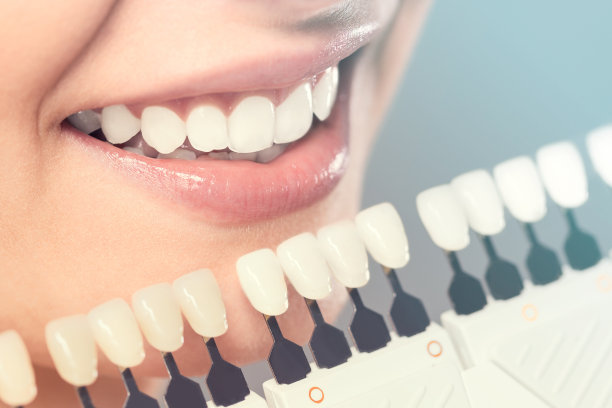The Painful Journey of Extracting a Tooth and Its Impact on Oral Health and Recovery
Summary: The extraction of a tooth, while necessary in many cases, can lead to considerable pain and discomfort. This article explores the painful journey of tooth extraction, shedding light on the various factors contributing to the discomfort experienced during the procedure. It also emphasizes the significant impact such a procedure can have on oral health, including the role of aftercare in recovery. Moreover, it outlines potential complications that may arise post-extraction and how they can affect long-term dental health. By providing a comprehensive understanding of the process, this article aims to prepare readers for what to expect and how to facilitate a smoother recovery.
1. The Reasons Behind Tooth Extraction

Tooth extraction is a common dental procedure often necessitated by various factors. One primary reason for extraction is severe tooth decay, which can lead to an infection that compromises the health of surrounding tissues. When a tooth is badly decayed, filling or other restorative procedures may not suffice, making extraction the safest option to prevent further issues.
Another common reason for extracting a tooth is periodontal disease. This condition affects the gums and bones supporting the teeth, leading to loose or infected teeth. In severe cases, immediate extraction may be required to safeguard ones overall dental health. As periodontal disease progresses, the risk of tooth loss significantly increases, necessitating prompt attention from a dental professional.
Additionally, overcrowding can prompt the need for extraction. If the mouth lacks enough space to accommodate all teeth, orthodontic treatment may require the removal of one or more teeth to achieve a proper alignment. Thus, understanding the reasons behind tooth extraction is crucial for patients anticipating this procedure.
2. The Pain and Discomfort Associated with Extraction
The immediate aftermath of a tooth extraction often involves significant pain and discomfort. Fear of pain can deter many individuals from seeking necessary dental care, yet understanding the pain management process can alleviate some concerns. Dentists typically administer local anesthesia to numb the extraction site, although some patients may still experience discomfort during the procedure.
Post-extraction pain is not uncommon and usually peaks within the first 24 to 48 hours. This pain is an expected part of the recovery process as the body heals. Patients may experience swelling and bruising around the extraction site, contributing to an overall discomfort. Understanding that these sensations are temporary can provide some reassurance during recovery.
Moreover, some individuals may face complications such as dry socket, which occurs when blood clots fail to form or are dislodged from the extraction site. This condition exacerbates pain levels and delays healing. Being aware of potential complications can help patients react promptly and seek professional assistance if necessary, making a smoother recovery possible.
3. Vital Aftercare Tips for Recovery
The significance of appropriate aftercare following a tooth extraction cannot be overstated. Following dentists post-operative instructions is essential in promoting healing and preventing complications. Key steps involve managing bleeding, maintaining a clean mouth, and adhering to prescribed medications, including pain relievers and antibiotics.
Rest and hydration are also critical during recovery. Patients should prioritize taking sufficient time off work or school to allow their body to heal properly. Consuming soft foods that are easy to chew can help avoid irritation to the extraction site while maintaining nutrition. Avoiding hot, spicy, or crunchy foods also minimizes the risk of complications like dry socket.
Furthermore, patients are advised to avoid strenuous activities and tolerate physical stress for a few days post-extraction. Following these aftercare protocols significantly reduces pain and enhances the healing process, ultimately impacting long-term oral health positively.
4. Long-term Impact on Oral Health
Tooth extraction can have long-term consequences on oral health that patients should be aware of. For instance, removing a tooth may lead to tooth migration, where neighboring teeth shift towards the empty space. This shifting can result in bite misalignments, affecting chewing and overall dental function.
Moreover, gaps left by extracted teeth can become breeding grounds for bacteria, increasing the risk of further dental issues. Without proper intervention, additional tooth loss may occur due to the deteriorating condition of the surrounding teeth and gums. Thus, planning for replacements such as dental implants or bridges is essential for maintaining optimal oral health.
Another important consideration is the psychological impact of tooth extraction. Patients may feel self-conscious about their smiles, leading to a decline in their overall well-being. It’s vital for individuals to engage in follow-up consultations with their dentist to address any grievances they may have, ensuring both emotional and physical healing occur concurrently.
Summary:
Tooth extraction, while sometimes necessary, represents a painful journey that significantly influences oral health. Good aftercare practices and awareness of potential long-term effects can enhance recovery and maintain overall dental health. Always consult your dentist for tailored advice and follow-up care to mitigate complications.
This article is compiled by Vickong Dental and the content is for reference only


